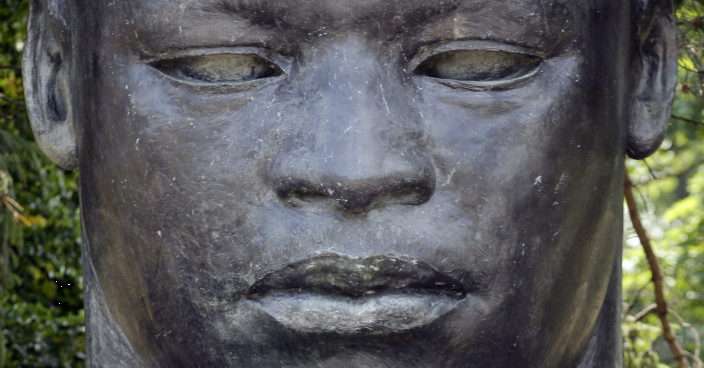A community activist says he has gathered more than 6,000 signatures to replace a large sculpture of Martin Luther King Jr. in a western New York park.
Samuel Herbert tells WIVB-TV his goal is to get 10,000 signatures and a new statue by 2020.
He says the 8-foot bust of King that sits in a namesake park in Buffalo doesn't look like the civil rights leader. The statue was unveiled in 1983.
While the original artist says the bust was supposed to be a representation, Herbert says, "enough of the symbolism, we want realism."
Herbert says he will start fundraising after reaching his signature goal.
He says he's prepared to take his battle to have the statue removed to court, if required.
NEW YORK (AP) — The first U.S. bird flu death has been reported — a person in Louisiana who had been hospitalized with severe respiratory symptoms.
State health officials announced the death on Monday, and the Centers for Disease Control and Prevention confirmed it was the nation's first due to bird flu.
Health officials have said the person was older than 65, had underlying medical problems and had been in contact with sick and dead birds in a backyard flock. They also said a genetic analysis had suggested the bird flu virus had mutated inside the patient, which could have led to the more severe illness.
Few other details about the person have been disclosed.
Since March, 66 confirmed bird flu infections have been reported in the U.S., but previous illnesses have been mild and most have been detected among farmworkers exposed to sick poultry or dairy cows.
A bird flu death was not unexpected, virus experts said. There have been more than 950 confirmed bird flu infections globally since 2003, and more than 460 of those people died, according to the World Health Organization.
The bird flu virus "is a serious threat and it has historically been a deadly virus," said Jennifer Nuzzo, director of the Pandemic Center at the Brown University School of Public Health. “This is just a tragic reminder of that.”
Nuzzo noted a Canadian teen became severely ill after being infected recently. Researchers are still trying to gauge the dangers of the current version of the virus and determine what causes it to hit some people harder than others, she said.
“Just because we have seen mild cases does not mean future cases will continue to be mild,” she added.
In a statement, CDC officials described the Louisiana death as tragic but also said “there are no concerning virologic changes actively spreading in wild birds, poultry or cows that would raise the risk to human health.”
In two of the recent U.S. cases — an adult in Missouri and a child in California — health officials have not determined how they caught the virus. The origin of the Louisiana person's infection was not considered a mystery. But it was the first human case in the U.S. linked to exposure to backyard birds, according to the CDC.
Louisiana officials say they are not aware of any other cases in their state, and U.S. officials have said they do not have any evidence that the virus is spreading from person to person.
The H5N1 bird flu has been spreading widely among wild birds, poultry, cows and other animals. Its growing presence in the environment increases the chances that people will be exposed, and potentially catch it, officials have said.
Officials continue to urge people who have contact with sick or dead birds to take precautions, including wearing respiratory and eye protection and gloves when handling poultry.
The Associated Press Health and Science Department receives support from the Howard Hughes Medical Institute’s Science and Educational Media Group. The AP is solely responsible for all content.

FILE -This colorized electron microscope image released by the National Institute of Allergy and Infectious Diseases on March 26, 2024, shows avian influenza A H5N1 virus particles (yellow), grown in Madin-Darby Canine Kidney (MDCK) epithelial cells (blue). (CDC/NIAID via AP, File)










